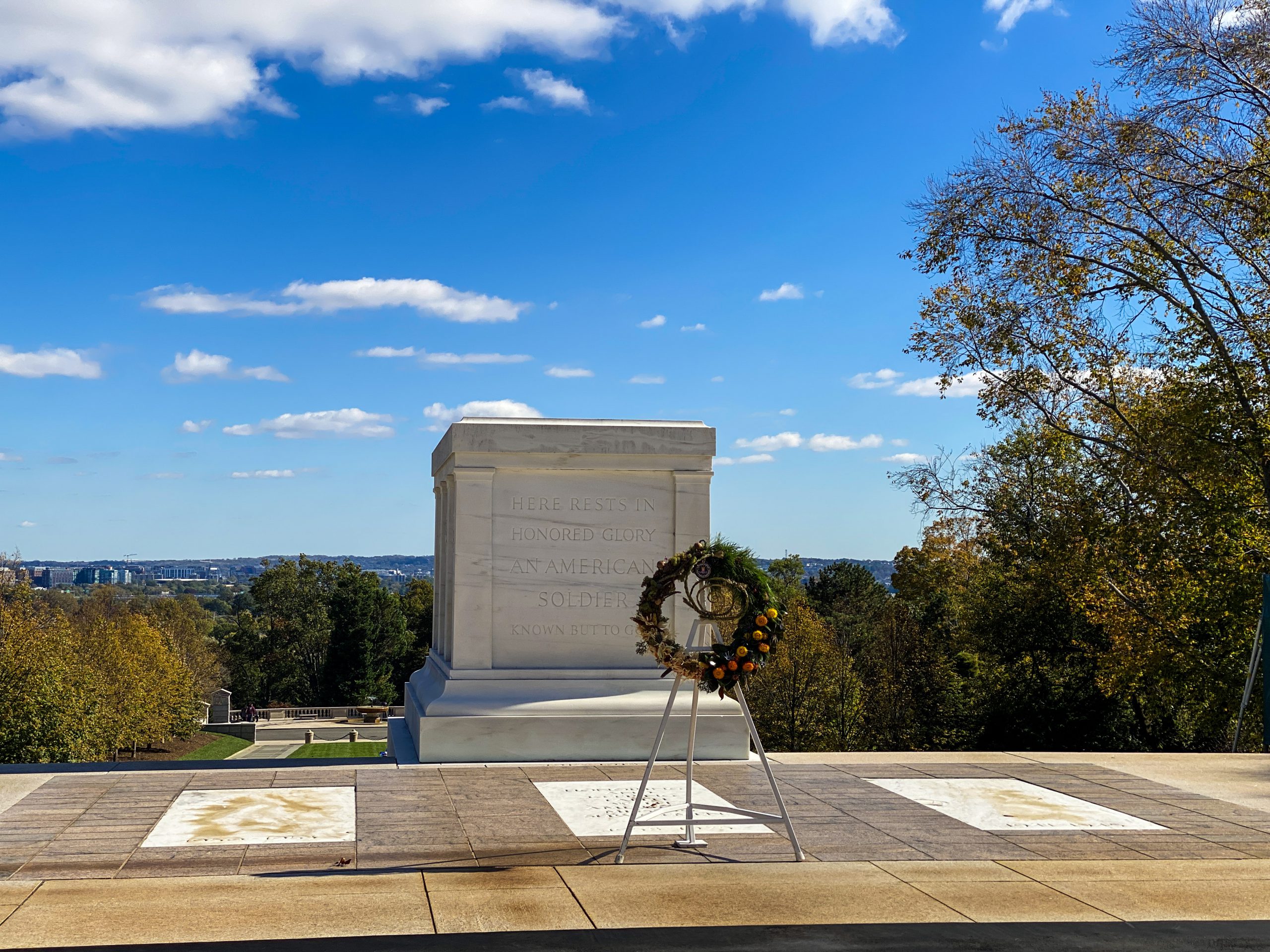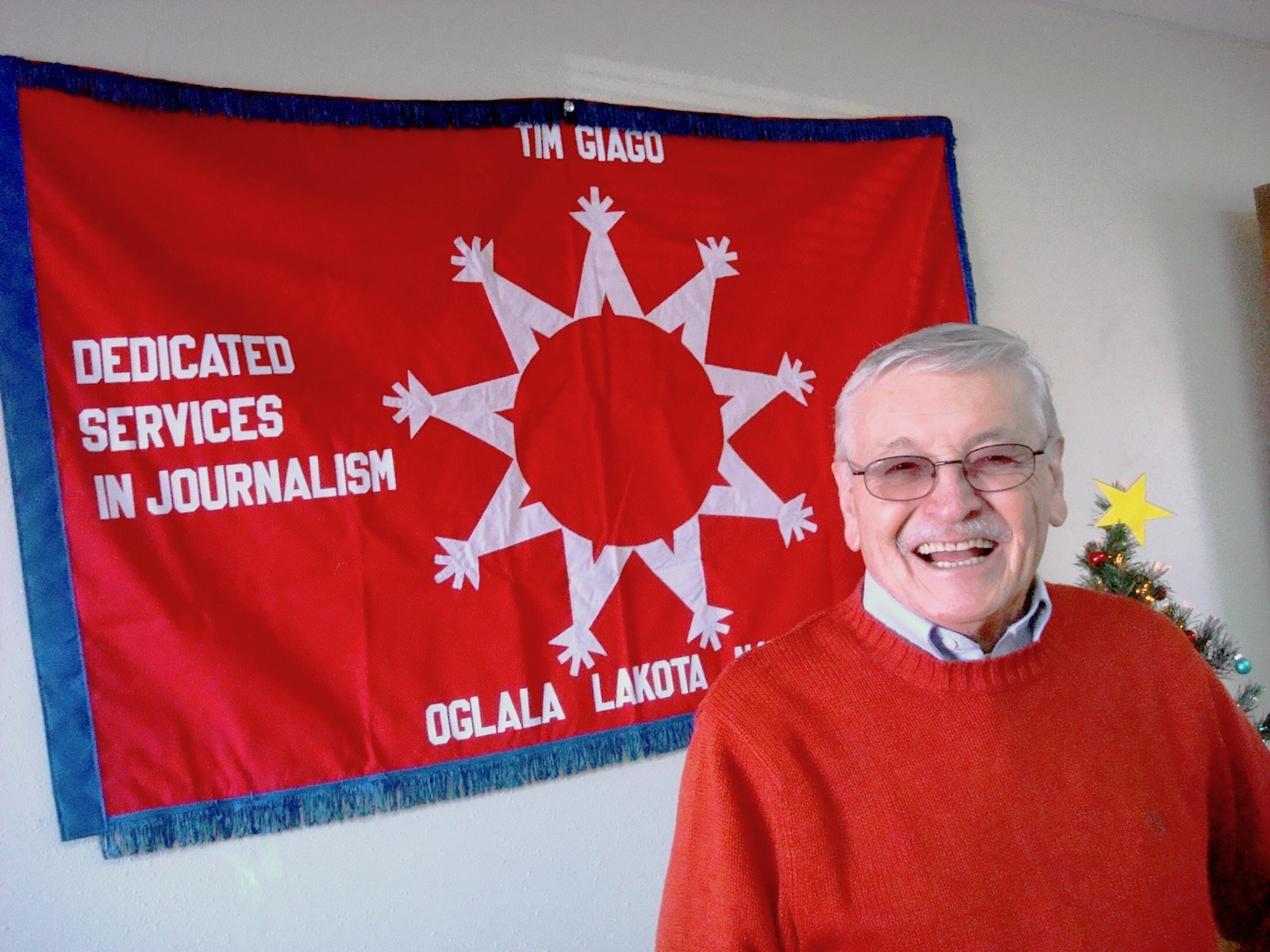Indianz.Com > News > Tim Giago: Thanking Native veterans for their service

Notes from Indian Country
Thank you for your service
Monday, May 31, 2021
Perhaps because it is the Memorial Day weekend, this morning I woke up with the bugle call of “reveille” in my mind.
And then I heard the sound of the Boatswain Mate’s whistle echoing through the address system on the ship. “Reveille, Reveille, up all hands. Heave out, trice up. The smoking lamp is lighted in all authorized spaces.”
Reveille and taps were the two bugle calls that introduced us to our lives in the military. Reveille to wake us up and taps to put us to sleep. But taps was also the mournful bugle call we heard at the funerals of our fallen comrades.
It took me back to a time when we were marching in a driving rain on the grinders of the United States Navy Recruit Depot in San Diego. That early winter of 1952 it rained and it rained. Most of the guys in my company wore out at least two pair of boots in the 3 months we marched in that rain.

Contact Tim Giago at najournalist1@gmail.com
Search
Filed Under
Tags
More Headlines
Native America Calling: No ordinary animal
Native America Calling: Safeguards on Artificial Intelligence
NAFOA: 5 Things You Need to Know this Week
Chuck Hoskin: Cherokee Nation takes the lead for our environment
Native America Calling: Earth Day assessment for Native peoples
Cronkite News: Gathering addresses ‘epidemic’ among Native people
VIDEO: Cody Desautel on tribes and federal forest management
AUDIO: Legislative Hearing on Discussion Draft of Forest Management Bill
Native America Calling: Remembering the 1974 Navajo border town murders
Native America Calling: Can the right approach close the Native immunization gap?
Cronkite News: Long COVID cases remain high in Arizona
Native America Calling: Eyes in the sky for development, public safety, and recreation
Native America Calling: Three new films offer diverse views of Native life
NAFOA: 5 Things You Need to Know this Week
Chuck Hoskin: Cherokee Nation works toward cure for arthritis
More Headlines
Native America Calling: Safeguards on Artificial Intelligence
NAFOA: 5 Things You Need to Know this Week
Chuck Hoskin: Cherokee Nation takes the lead for our environment
Native America Calling: Earth Day assessment for Native peoples
Cronkite News: Gathering addresses ‘epidemic’ among Native people
VIDEO: Cody Desautel on tribes and federal forest management
AUDIO: Legislative Hearing on Discussion Draft of Forest Management Bill
Native America Calling: Remembering the 1974 Navajo border town murders
Native America Calling: Can the right approach close the Native immunization gap?
Cronkite News: Long COVID cases remain high in Arizona
Native America Calling: Eyes in the sky for development, public safety, and recreation
Native America Calling: Three new films offer diverse views of Native life
NAFOA: 5 Things You Need to Know this Week
Chuck Hoskin: Cherokee Nation works toward cure for arthritis
More Headlines